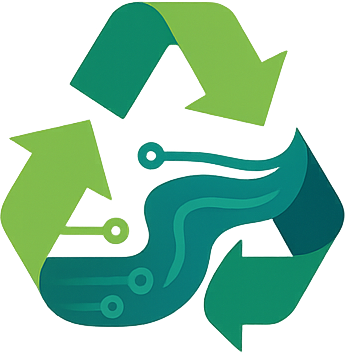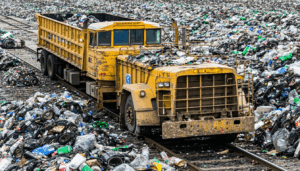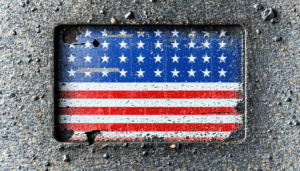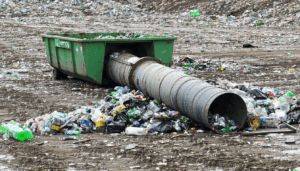In the United States, the safe disposal of chemical waste remains a pressing environmental and public health concern. With industrial activities generating millions of tons of hazardous materials annually, the demand for accessible and compliant disposal solutions is at an all-time high. This article explores the latest developments in chemical waste disposal services across the country, highlighting new regulations, innovative technologies, and how individuals and businesses can locate reliable options for “chemical waste disposal near me.” Stay informed about the critical steps being taken to protect communities and the environment.
The Growing Need for Chemical Waste Disposal in the U.S.
Chemical waste, ranging from industrial byproducts to household cleaners, poses significant risks if not handled properly. According to the Environmental Protection Agency (EPA), over 30 million tons of hazardous waste are generated each year in the U.S., with improper disposal leading to soil contamination, water pollution, and health hazards. The urgency to find local solutions for “chemical waste disposal near me” has grown as communities grapple with the consequences of illegal dumping and outdated disposal methods.
This issue affects not only large industries but also small businesses, laboratories, and households. A recent surge in public awareness has prompted federal and state governments to tighten regulations and improve access to disposal facilities. The challenge lies in ensuring these services are both accessible and environmentally sound.
New Regulations Shaping Chemical Waste Management
In 2023, the EPA introduced stricter guidelines under the Resource Conservation and Recovery Act (RCRA) to oversee hazardous waste management. These updates mandate that businesses generating chemical waste must register with local authorities and adhere to specific storage and transportation protocols. Non-compliance can result in hefty fines, with penalties reaching up to $75,000 per violation per day.
According to Dr. Emily Harper, an environmental policy expert at the University of California, “These regulations are a step forward in holding industries accountable. They also encourage the development of localized disposal solutions, making it easier for people to search for chemical waste disposal near me without risking environmental harm.” States like California and Texas have already rolled out online portals to help residents locate certified facilities.
Innovative Technologies Transforming Disposal Practices
Beyond regulations, technology is playing a pivotal role in revolutionizing chemical waste disposal. Advanced treatment methods, such as plasma arc technology and bioremediation, are being adopted by facilities nationwide to neutralize hazardous substances. For instance, a pilot program in Ohio reported a 40% reduction in toxic emissions from chemical waste processing last year, thanks to these innovations.
These advancements not only minimize environmental impact but also reduce costs for businesses. However, access to such cutting-edge facilities remains limited in rural areas, pushing many to rely on traditional methods or long-distance transport. Industry leaders are advocating for federal funding to expand these technologies across all states.
Impact on Communities and Businesses
The implications of improved chemical waste disposal systems extend to public health and economic stability. Communities near industrial zones often bear the brunt of pollution from improper waste handling, with studies linking exposure to higher rates of respiratory illnesses. Enhanced local disposal options can mitigate these risks, fostering safer living conditions.
For businesses, compliance with disposal laws is both a legal obligation and a reputational asset. Small enterprises, such as auto repair shops or medical clinics, often struggle to find affordable services. State initiatives, like New York’s Hazardous Waste Assistance Program launched in early 2023, offer subsidies and guidance to help these entities manage waste responsibly.
Future Outlook for Chemical Waste Disposal Near Me
Looking ahead, experts predict a continued push toward sustainability in chemical waste management. The EPA aims to increase the number of certified disposal sites by 20% over the next five years, addressing the accessibility gap in underserved regions. Additionally, public-private partnerships are expected to drive innovation and lower costs for end users.
While progress is evident, challenges remain. Balancing environmental protection with economic feasibility is a delicate task, and opinions differ on how much regulation is necessary. Some industry stakeholders argue that overly strict rules could stifle growth, while environmentalists insist on zero-tolerance policies for violations. A middle ground must be found to ensure long-term success.
In conclusion, the landscape of chemical waste disposal in the U.S. is evolving rapidly with tighter regulations, technological breakthroughs, and a focus on community safety. For those searching for “chemical waste disposal near me,” resources are becoming more accessible through state programs and online tools. Staying informed about these developments is crucial for protecting both the environment and public health.
Frequently Asked Questions (FAQ)
-
How can I find chemical waste disposal near me?
Use online tools provided by the EPA or state environmental agencies to locate certified facilities. Many states also offer hotlines for assistance. -
What qualifies as chemical waste?
Chemical waste includes hazardous materials like solvents, pesticides, batteries, and industrial byproducts that pose risks to health or the environment. -
Are there penalties for improper disposal?
Yes, fines can reach up to $75,000 per violation per day under federal law, alongside potential legal action for environmental damage. -
Can households dispose of chemical waste at local facilities?
Many communities host periodic collection events for household hazardous waste. Check with your local government for schedules and guidelines.





